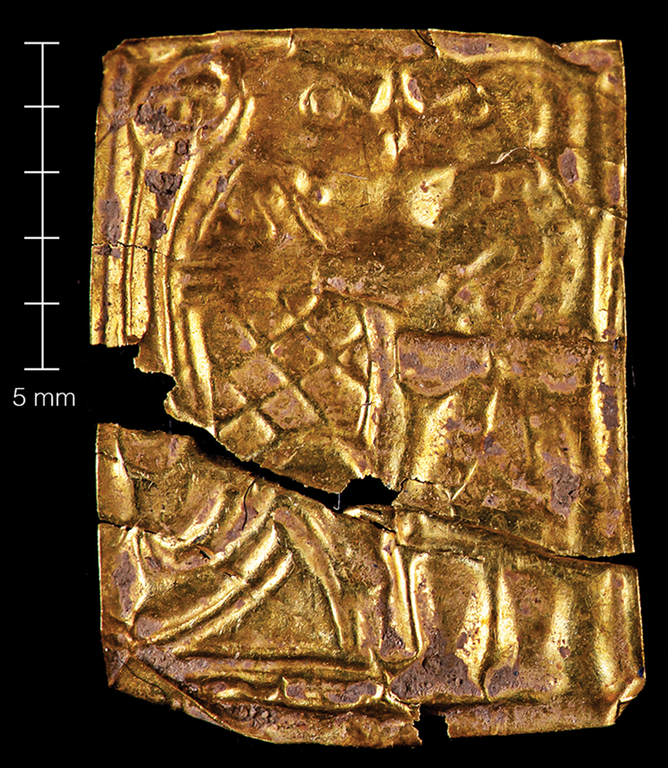Golden finds discovered in Sweden during excavations carried out by a team of archaeologists from the University of Lodz have been featured on the cover of the latest issue of “Antiquity Journal” – the most prestigious archaeological publication in the world.
Excavations and geophysical surveys carried out in Sweden by the team of Dr Martin Rundkvist from the Department of Historical Archaeology and Weaponry at the Institute of Archaeology at the University of Lodz, in collaboration with the Östergötland District Museum, have revealed the foundations of an almost 50-metre-high wooden building on a high clay platform in the village of Aska. The find dates to between approximately 650 and 950 AD. The archaeological site managed to uncover 30 miniature paintings in gold foil depicting richly dressed, embracing couples.
“This must have been the main court of a provincial royal dynasty during the last three centuries before the medieval Kingdom of Sweden was established in 990. It is the largest known building in Östergötland before the construction of Linköping Cathedral. There are no narrative written sources for this time and region, so no names have survived to this day”, says Dr Rundkvist.
The gold foil miniatures found at the archaeological site are very typical of the remains of aristocratic families throughout Scandinavia. However, their function and symbolism are not well understood. They are thin and easily damaged and seem to have no practical use. They were probably buried soon after they were made. Scholarly interpretations of the hug motif have ranged from ritual images of divine ancestors of royalty to gifts at earthly weddings of the highest aristocracy.
The field research at Aska was made possible by a combination of Polish and Swedish funding. It was carried out by a team of archaeology students from Łódź and Stockholm, with support from the Swedish Association of Metal Detectors.
Arkadiusz Słomczyński





